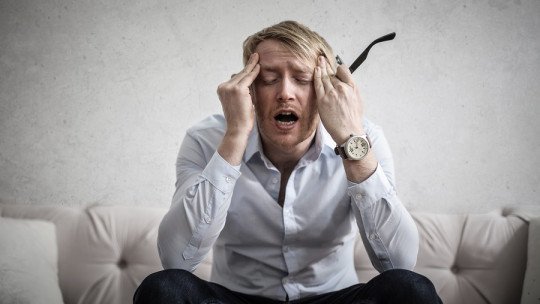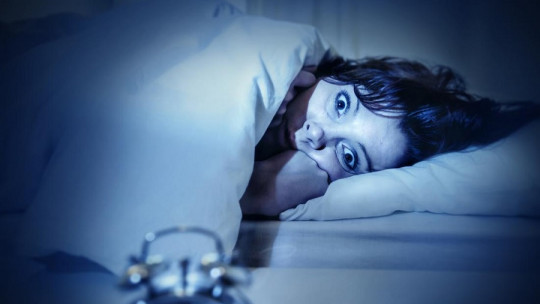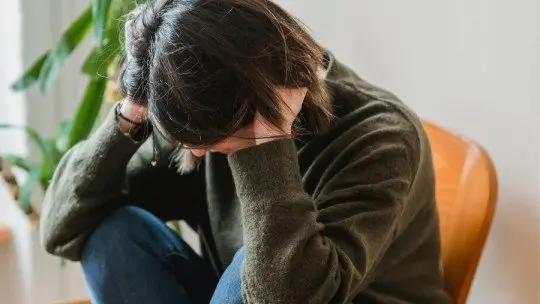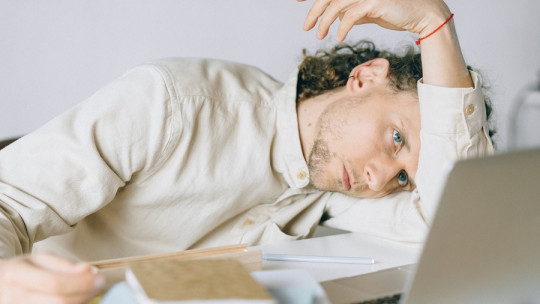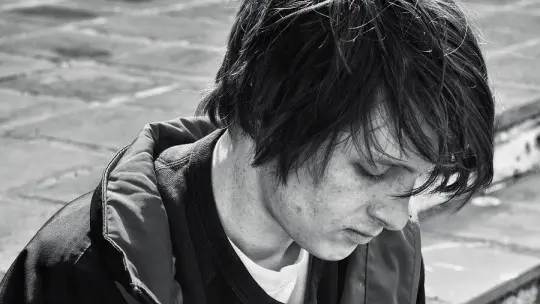Dyspnea due to anxiety is a difficult experience that presents as respiratory difficulty triggered by situations of high levels of stress and anxiety. It is a situation that can be very worrying and disconcerting for those who experience it, since the respiratory symptoms can generate great distress and trigger higher levels of anxiety, creating a harmful cycle.
In this PsychologyFor article we will explore in detail the concept of d isnea due to anxiety: what it is, causes, symptoms and treatmentyes available to address this emotional challenge.
What is dyspnea due to anxiety
Anxiety dyspnea is a condition characterized by a uncomfortable and distressing feeling of difficulty breathing, which can occur in people who experience high levels of anxiety and stress. Although people who experience it do not have problems with their respiratory system, they may feel as if they are short of breath or have shallow, rapid breathing.
The connection between anxiety and breathlessness is based on the body’s response to stress. When a person faces stressful situations, the nervous system activates the fight or flight response which leads to physiological changes, including a higher respiratory rate.
In some cases, this can lead to a feeling of shortness of breath, even if there is no underlying physical problem. In this article we explain what shortness of breath due to anxiety is like and how to treat it.
How long does dyspnea due to anxiety last?
Typically, episodes of dyspnea due to anxiety They are usually short-lived, from a few minutes to an hour. These episodes tend to subside once the person manages to calm their anxiety and restore breathing to a more normal rhythm.
However, the duration of anxiety dyspnea It may vary depending on each person. and the frequency and severity of anxiety episodes they experience. For this reason, some people may experience sporadic, brief episodes of anxiety-related breathlessness, while others may have more persistent symptoms.
In some cases, if anxiety is not adequately addressed or stressful situations continue, episodes of breathlessness may reoccur on a recurring basis. This can lead to worry and anticipation about attacks of breathlessness, which in turn can worsen symptoms of anxiety and shortness of breath.
Causes of anxiety dyspnea
The causes of dyspnea due to anxiety can be diverse and are closely related to the interaction between emotional states and the respiratory system. Below we explain the main causes of dyspnea due to anxiety:
- Stressful situations: When a person faces stressful situations or experiences high levels of anxiety, the body responds with a fight or flight mechanism as protection. This response involves a series of physiological changes, including an increase in respiratory rate.
- Hyperventilation: One of the key factors contributing to anxiety dyspnea is hyperventilation, which refers to rapid, shallow breathing. When a person is anxious, he may begin to breathe more quickly and shallowly than necessary, leading to an imbalance in oxygen and carbon dioxide levels in the body. This can result in symptoms such as feeling short of breath, tightness in the chest, and difficulty breathing.
- Anxiety disorders: People who suffer from anxiety disorders, such as generalized anxiety disorder or panic disorder, may be more susceptible to experiencing symptoms of breathlessness during anxiety episodes.
- Anticipation: Anxiety dyspnea may also be related to the anticipation of stressful situations or traumatic events, generating an anxiety response before the event itself occurs.
- Feeling of lack of control: The feeling of lack of control or the fear of losing control during stressful situations can also trigger dyspnea.
- Family background: People with a history of breathing disorders, such as asthma, may be more likely to experience symptoms of anxiety breathlessness, as anxiety can worsen existing respiratory symptoms.
ymptoms of anxiety dyspnea
The symptoms of anxiety dyspnea can vary in intensity and duration, and can be distressing for those who experience it. These symptoms are closely related to the connection between emotions and breathing and can manifest themselves on both a physical and emotional level.
Physical symptoms of anxiety dyspnea
On a physical level, one of the most common symptoms of anxiety dyspnea is feeling short of breath or difficulty breathing People may describe it as not being able to fully fill their lungs with air, which can lead to faster, shallower breaths. This shortness of breath can be especially noticeable during times of intense anxiety or stressful situations.
In addition to difficulty breathing, other physical symptoms may include tightness in the chest, feeling of suffocation palpitations or tachycardia, excessive sweating, tremors and feeling of dizziness or fainting. Some people may also experience Tingling sensation or numbness in the extremities.
Emotional symptoms of anxiety dyspnea
On an emotional level, symptoms may include a feeling of fear or panic, intense worry, restlessness, irritability or nervousness In addition, dyspnea due to anxiety can trigger anxiety attacks, in which physical and emotional symptoms can increase in intensity, generating a vicious cycle of anxiety.
In the following article you will find information on How to control an anxiety or panic attack.
Treatment of Dyspnea due to anxiety
The treatment of dyspnea due to anxiety focuses on addressing both the respiratory symptoms and the anxiety that triggers it. Below are the techniques that have proven to be most effective.
- Cognitive-Behavioral Therapy (CBT): CBT is a highly effective psychological therapy to address anxiety dyspnea. It focuses on identifying and modifying patterns of thinking and behavior that contribute to anxiety. Through this therapy, people learn to restructure and question their negative thoughts and gradually confront situations that trigger anxiety, which helps reduce symptoms of dyspnea.
- breathing techniques: Learning proper breathing techniques can be helpful in regulating the physiological response to stress and reducing hyperventilation. Slower, deeper breathing practices can improve feelings of shortness of breath and help calm the nervous system.
- Exposure therapy: This technique consists of gradually exposing yourself to situations or stimuli that generate anxiety. By repeatedly facing these situations without real harm occurring, anxiety decreases over time and symptoms of breathlessness are reduced.
- Relaxation training– Meditation, yoga, and other relaxation techniques can be beneficial in reducing anxiety and improving emotional and physical well-being. These practices help calm the mind and body, which can decrease symptoms of breathlessness.
- Pharmacotherapy: In some cases, drug treatment may be useful to control anxiety symptoms. Antidepressants and anti-anxiety medications can help stabilize mood and reduce anxiety symptoms, but they should always be prescribed and supervised by a health professional.
This article is merely informative, at PsychologyFor we do not have the power to make a diagnosis or recommend a treatment. We invite you to go to a psychologist to treat your particular case.
If you want to read more articles similar to Dyspnea due to anxiety: what it is, causes, symptoms and treatment we recommend that you enter our Clinical Psychology category.
Bibliography
- Benito, A.D. (2021). Exposure therapy: systematic review on its effectiveness in reducing fear and anxiety in people with specific phobias. University of La Laguna. http://riull.ull.es/xmlui/handle/915/23987
- Escribano, SA (2017). Panic disorder and its psychological treatment: review and update. Dialnet. https://dialnet.unirioja.es/servlet/articulo?codigo=5888107
- González, JG, Sendín, DS, Soriano, AS, and Sancho, AM (2015). Dyspnoea. respiratory insufficiency. Medicine – Accredited Continuing Medical Training Program. https://doi.org/10.1016/j.med.2015.10.004
- Martínez-Moragón, E., Perpiñá, M., Belloch, A., Serra, B., Lloris, A., and Macián, V. (2006). Temporal evolution of the exaggerated perception of dyspnea in patients with asthma. Bronchoneumology Archives. https://doi.org/10.1157/13085560
- Martínez-Rivera, C., Del Carmen Vennera, M., Cañete, C., Bardagí, S., and Picado, C. (2011). Psychological profile of patients with bronchial asthma and functional dyspnea: comparison with non-asthmatic population and impact on the disease. Bronconeumology Archives, 47(2), 73-78. https://doi.org/10.1016/j.arbres.2010.10.003
- Pastor, LCD, and Amutio, A. (2011). Generalized anxiety and its treatment based on mindfulness. ResearchGate. https://www.researchgate.net/publication/277259546
- Sarudiansky, M. (2013). Anxiety, anguish and neurosis. conceptual and historical background. Redalyc.org. http://www.redalyc.org/articulo.oa?id=133930525003




